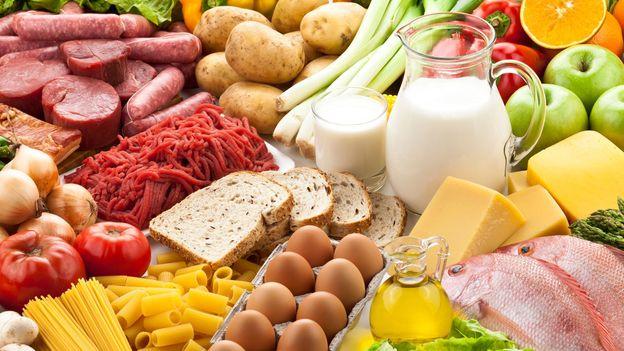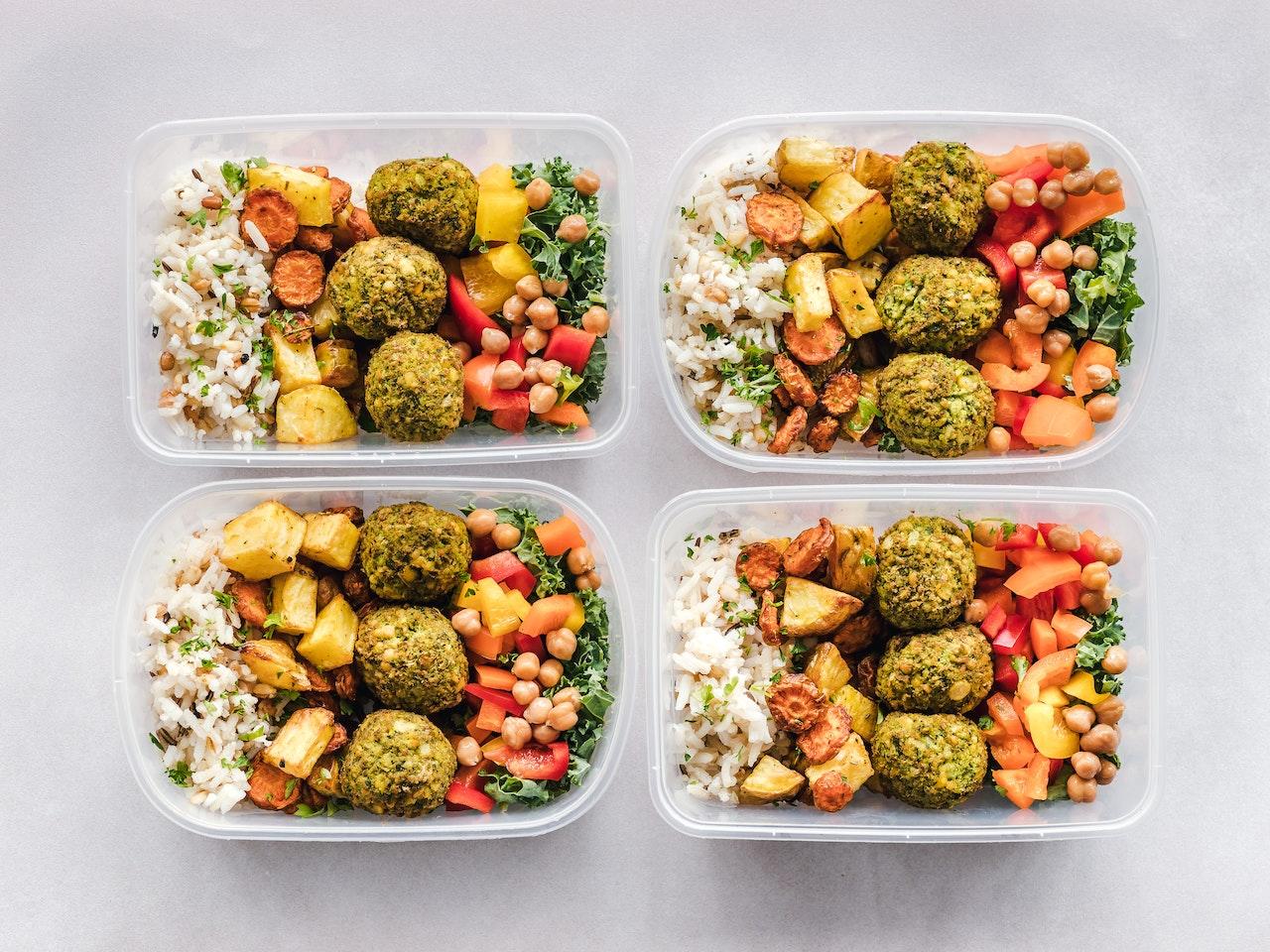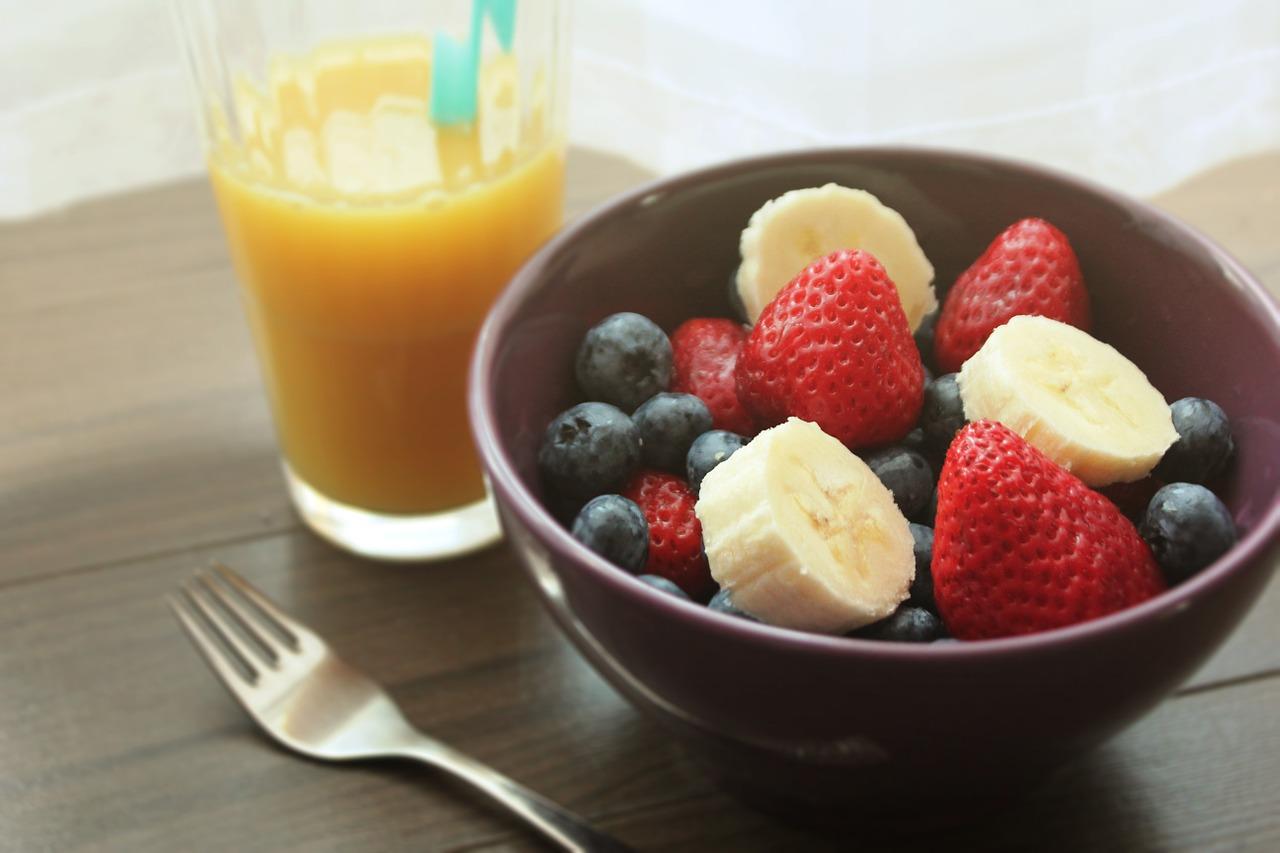A healthy, balanced diet is one that contains foods from the 5 main food groups. These groups are starchy carbohydrates, fruits and vegetables, protein, dairy, and healthy fats. Each food group provides the necessary range of vitamins and minerals to our bodies that are essential to maintain a healthy lifestyle.
Although it is not always possible that every meal will include foods from all 5 groups, we should aim to achieve a balance across all our meals throughout the day. In this post, we give you an idea about what constitutes the 5 major food groups and how much of each is needed to create an optimally balanced diet.

Healthy Fats
Fats have long been vilified for being a major source of unhealthiness. While it is true that too much fat or too much of the wrong type of fat can be unhealthy, fats are also a source of nutrition as well as a fuel source for the body. In fact, recent studies are increasingly promoting the consumption of fats in moderate amounts for the maintenance of good health.
Dietary fats are needed by cells to sustain their functions. Dietary fats also help protect your organs and help keep your body warm. Moreover, fats are responsible for the absorption of some nutrients and the production of important hormones. There are 4 major dietary fats in food, with different chemical and physical properties:
- Saturated fats
- Transfats
- Monounsaturated fats
- Polyunsaturated fats

Fatty Foods High in Nutrition
- Nuts: They are high in healthy fats and fiber; good plant-based source of protein; contain vitamin E and magnesium; lower the risk of various diseases, including obesity, heart disease, and type 2 diabetes
- Cheese: Source of calcium, vitamin B12, phosphorus, and selenium; rich in protein, with a single ounce (28 grams) of cheese containing 6 grams of protein, nearly as much as a glass of milk
- Dark Chocolate: Contains fiber and several notable nutrients, including iron and magnesium; rich in antioxidants like resveratrol, which may possess anti-aging and performance-enhancing properties
- Whole Eggs: Rich in nutrients, including a variety of vitamins and minerals; high in protein, which can help you to stay fuller between meals and cut down on excess calories
Protein Food Group
Proteins are responsible for the creation of energy and the transportation of oxygen in our blood. Proteins also help create antibodies to fight off infections and illnesses and are a key element in the generation and regeneration of body cells. Proteins are the building blocks of your muscles and help to maintain muscle mass and promote muscle growth.
Numerous scientific studies suggest that a high-protein diet has major benefits for weight loss and metabolic health.
Greater proteins in our body reduce age-related muscle deterioration and prevent sarcopenia. Proteins are also directly responsible for the healing of the body from injury. Check out these healthy sources of protein, natural and artificial, for balanced nutrition.
Eggs
Egg protein is highly bio-available. Both the egg white and the yolk help support muscle growth and strength. Eggs are abundant in leucine, one of the most essential amino acids. Try including Omega-3 enriched eggs which contain 6 grams of protein in 1 egg.
Paneer or Cottage Cheese
Around 15 grams in half a cup of paneer is a great way to up your protein. It is especially beneficial as a late-night snack.
Dahi or Yogurt
Yogurt provides around 23 grams of protein per bowl. Dahi also provides the added benefits of gut-friendly bacteria and bone-strengthening calcium.
Milk
Fish and Seafood
Fish and seafood are rich in Omega-3 fatty acids known as EPA and DHA. The Indian Tilapia is a wonderful brain and muscle food. You can also include sardines, salmon, mussels, shrimps, red-snapper, and oysters for their high protein and mineral content. Shrimps are a source of pure protein. They are low in calories, carbs, and fat. Delicious to taste, shrimps also contain antioxidants like astaxanthin, which reduces inflammation and oxidative damage.
Chicken
A broth made with chicken bones is a powerhouse of good quality proteins and collagen that help to build and repair your muscles.
Lentils
Lentils need to be combined with rice, wheat, or corn to make it a complete protein with an abundant dose of all essential amino acids. Sprouts are also a great way to obtain easily-absorbable proteins with fiber and B and C vitamins that build immunity.
Red meat
Lean goat or lamb meat is a major source of protein. They are also excellent sources of iron and zinc.
Nuts and seeds
Nuts and seeds, including peanuts, cashews, almonds, walnuts, and seeds like pumpkin, chia, flax, and sunflower, can be a great option for Indian snacks. It is advisable not to heat or roast the seeds as this kills the healthy fatty acids they contain.
Green peas
One cup of green peas contains 7.9 grams of protein which is almost the same as a cup of milk.
Amaranth
Amaranth laddoos and other such treats have been a part of the Indian diet for a long time. This native Indian grain is abundant in magnesium, manganese, phosphorus, and iron. It provides 9 grams of protein in a cup of cooked grains.
Soybeans
Soybeans are low in saturated fat and high in vitamin C, protein, and folate. Soy is a great source of calcium, fiber, iron, magnesium, phosphorus, and potassium. One bowl of cooked soybean contains 28 grams of protein.
Legumes
Legumes include varieties of beans such as kidney beans, black beans, chickpeas that are widely considered to be essential sources of proteins. Chickpeas contain about 15 g of protein per serving, along with numerous other nutrients that keep you healthy, strong, and fit.
Oats
Oats help to reduce the risk of heart disease and lower cholesterol. A small cup of oats can provide you with nearly 6 g of protein and quarter your daily requirement of fiber.
High Protein Vegetables and Fruits
Some fruits and vegetables have a considerable quantity of protein such as bananas, spinach, potatoes, broccoli, asparagus, and sweet potatoes.
Find out more when you consult with a dietitian in Bangalore or your city.
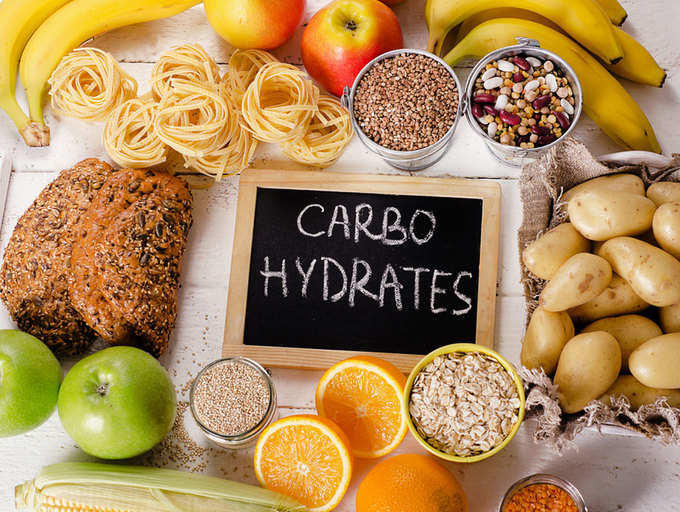

Carbohydrate Food Group
Carbohydrates are sources of energy for the central nervous system and for working muscles. They also enable fat metabolism. Broadly, carbohydrates are classified as simple or complex carbohydrates. The recommended daily amount (RDA) of carbs for adults is around 4.7 ounces (135 grams). Try to include these healthy, high-carb foods in your balanced diet.
Bananas
One large banana (136 grams) contains about 31 grams of carbs, either in the form of starches or sugars. Bananas help lower blood pressure and improve heart health.
Sweet Potato
One half-cup (100 g) of this delicious, nutritious tuber or root vegetable contains about 20.7 grams of carbs, which consists of starch, sugar, and fiber. Sweet potatoes protect you against chronic diseases.
Milk and Yogurt
Lactose, a form of naturally occurring sugar, is abundant in milk and yogurt. One cup of nonfat, fruit-flavored yogurt contains about 47 grams of carbohydrates.
Beet
Raw and cooked beets contain about 10 grams of carbs per 100 grams, mainly from sugar and fiber. Beets are known to lower blood pressure.
Kidney beans
Cooked kidney beans contain about 21.5 grams of carbs per 100 grams, in the form of starches and fiber. They help to improve blood sugar regulation and reduce the risk of colon cancer.
Apples
Apples contain about 14–16 grams of carbs per 100 grams. Apples aid blood sugar management and improve heart health.
Chickpeas (Chana)
Cooked chickpeas contain 27.4 grams of carbs per 100-gram serving, along with almost 8 grams of fiber. They improve heart health and digestive health. Ongoing research suggests that they may also help protect against certain types of cancer.
Healthy Dairy Foods
Dairy products are varied in nature and, as such, they contain a variety of nutrients. While buying dairy products, be sure to check the nutrition information on the label. Here are dairy food recommendations from the top nutritionists and dietitian near me.
- Liquid milk: Includes products such as pasteurized milk, skimmed milk, standardized milk, reconstituted milk, ultra-high-temperature (UHT) milk, and fortified milk.
- Fermented milk: Include yogurt, koumiss, dahi, labneh, ergo, tarag, kraut, and kefir.
- Cheese: Cheese can be soft, hard, semi-hard, hard ripened, or unripened. Traditional cheeses include ayib, gibna bayda, chanco, queso fresco, akawieh, and chhurpi.
- Butter and ghee: Traditional butter is obtained by churning sour whole milk. Ghee is obtained by removing the water from butter and is especially popular in South Asia.
- Condensed milk: Can be sweetened or unsweetened; often used in cooking and baking instead of jam.
- Evaporated milk: Generally mixed with other foods, such as milky tea.
- Dry milk or milk powder: Usually used in the form of powder or granules.
- Cream: Include recombined cream, reconstituted cream, prepared creams, pre-packaged liquid cream, whipping cream, cream packed under pressure, whipped cream, fermented cream, and acidified cream.
- Whey products: Used in the manufacture of lactose, whey paste, and dried whey; can be sweet (from the production of rennet-coagulated cheeses) or acid (from the production of acid-coagulated cheeses).
- Casein: Used as an ingredient in several products, including cheese, bakery products, paints, and glues.
Dairy Alternatives
- Milk: Almond milk, coconut milk beverage, and calcium-fortified soy, rice, and other cereal drinks
- Butter: Dairy-free margarine, cooking or baking oils, fruit purees for baking, nutritional yeast for flavor, coconut butter
- Cheese: Nutritional yeast, tofu, faux cheese
- Chocolate: Dark or semi-sweet chocolate, dairy-free ‘milk’ chocolate, white chocolate, or pure chocolate
- Cream: Coconut milk, milk alternatives, dairy-free margarine, silken tofu, oils, nuts, and seeds
- Yogurt: Buttermilk alternative, coconut cream, homemade dairy-free yogurt, pureed silken tofu, sour cream alternative
Fruits and Vegetables
Fruits and vegetables form an important part of a balanced diet due to their rich content of vitamins and minerals, such as vitamins A, C, and E, magnesium, zinc, phosphorous and folic acid that help maintain a healthy lifestyle. Fruits and vegetables also build up the immune system to fight diseases. They are low in fat, salt, and sugar and are a good source of dietary fiber.
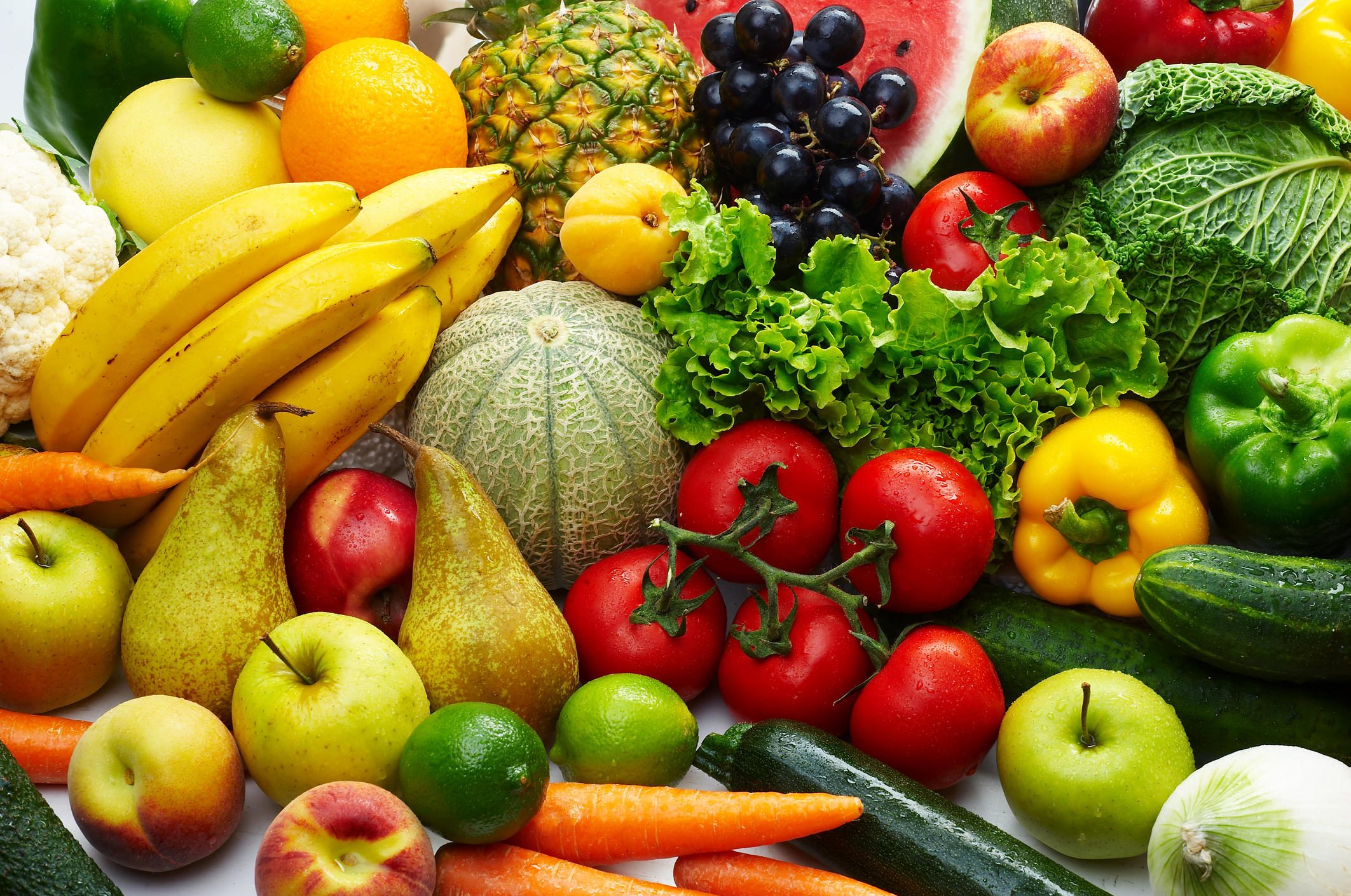
Types of Foods in Vegetable Group
Vegetables may be raw or cooked; fresh, frozen, canned, or dried/dehydrated; and may be whole, cut-up, or mashed. Vegetables are classified into biological groups or ‘families’, namely:
- Leafy green – lettuce, spinach, and silverbeet
- Cruciferous – cabbage, cauliflower, Brussels sprouts, and broccoli
- Marrow – pumpkin, cucumber, and zucchini
- Root – potato, sweet potato, and yam
- Edible plant stem – celery and asparagus
- Allium – onion, garlic, and shallot
Types of Foods in Fruit Group
Fruits are usually eaten raw, although some varieties can be cooked. They come in a wide variety of colors, shapes, and flavors. Fruits may be fresh, frozen, canned, or dried/dehydrated, and maybe whole, cut-up, pureed, or cooked. Common types of fruits include:
- Apples and pears
- Citrus – oranges, grapefruits, mandarins, and limes
- Stone fruit – nectarines, apricots, peaches, and plums
- Tropical and exotic – bananas and mangoes
- Berries – strawberries, raspberries, blueberries, kiwifruit, and passionfruit
- Melons – watermelons, rockmelons, and honeydew melons
- Tomatoes and avocados
The amount of fruits and vegetables you need to eat depends on your age, sex, height, weight, and level of physical activity. For women, the amount can also depend on whether you are pregnant or breastfeeding. In general, 1 cup of fruit or 100% fruit juice, or ½ cup of dried fruit can be considered as 1 cup from the Fruit Group, while 1 cup of raw or cooked vegetables or vegetable juice, or 2 cups of raw leafy salad greens can be considered as 1 cup from the Vegetable Group.
Learn more including how to build your own healthy meal plan with an online dietitian on Superprof.

